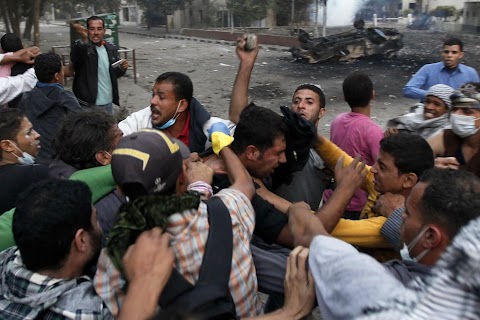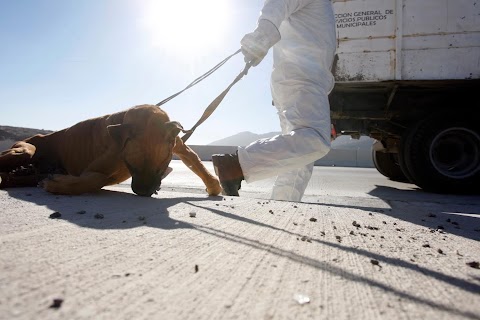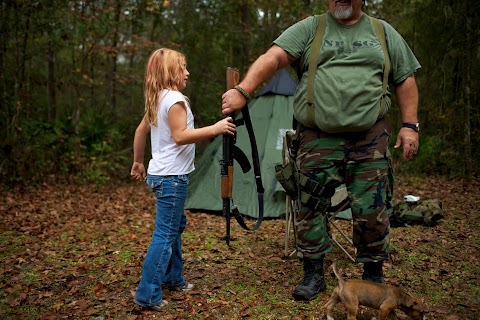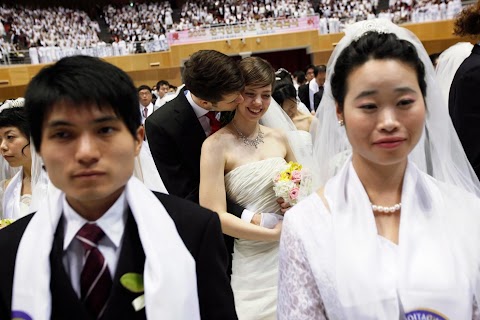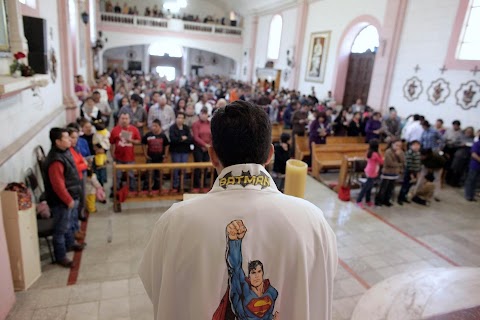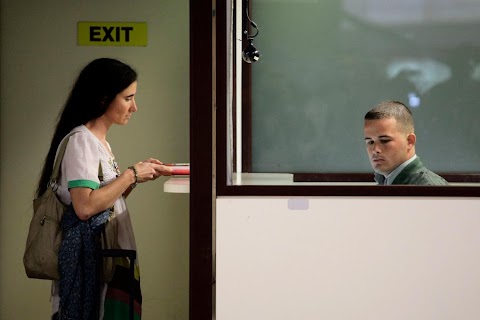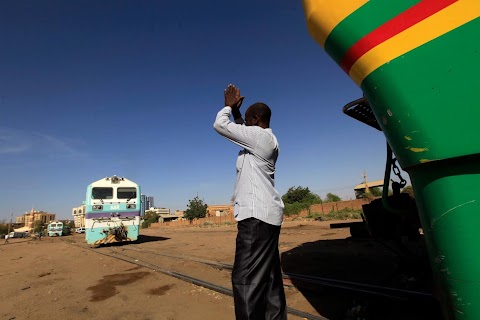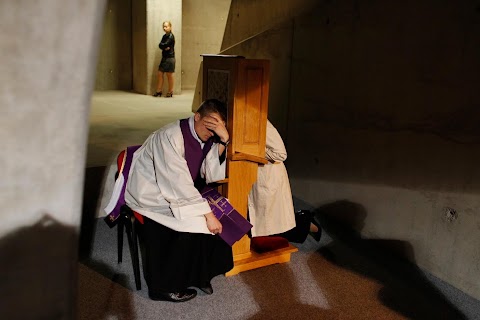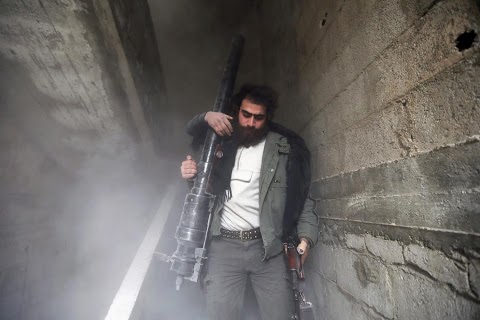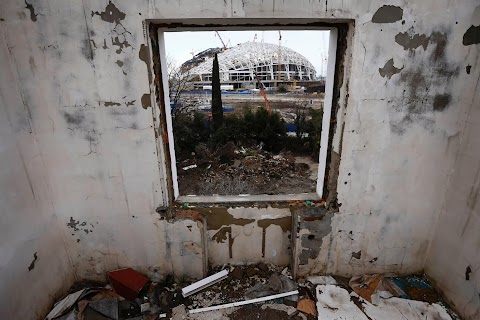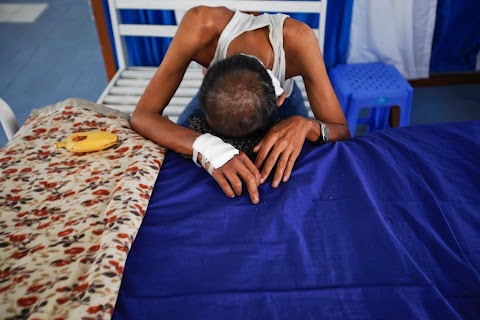
Help for the hopeless
The U Hla Tun Hospice Foundation provides care for terminally ill cancer patients in desperate circumstances.
Its centre in Yangon supports those who have been discharged from government hospitals and provides them with everything for free, from daily meals and medicine to burial and funeral rites.

The feet of U Ohn Myint, a 60-year-old patient who died of cancer, are tied together with a piece of cloth as his body is placed inside the hospice morgue.
According to a nurse at the Yangon centre, about 10 patients die there every month. New patients also arrive constantly, meaning that the number in the hospice remains constant around 30 at any one time.
Slideshow

Fifty-two-year-old U Aung Than, who suffers from tongue cancer, rests in his bed.

Arsainddha, a 56-year-old Buddhist monk, has a brain tumour.

Daw San Nu, 78, suffers from eyelid cancer.

The wife of 60-year-old cancer patient U Ohn Myint touches his arm.

Daw Htwe Yi (right), a 53 year old suffering from ovarian cancer, talks to Daw Khin Sein, 67, who has a bed next to hers.

U Myint Khine, a 51-year-old patient at the hospice, takes time to pray.

Cancer patients look out over the grass outside the hospice.

Two of those receiving care meditate in the prayer room.

Family members of a patient who died a week earlier donate money to the hospice.
"It’s sad but true that most of the patients die very lonely."
"There are about 30 patients in our hospice and the number’s always about the same. New patients arrive regularly and old patients die. About ten die every month here.”
These were the words of the nurse showing me around the U Hla Tun Cancer Hospice. I was kind of shocked; if ten patients die a month, that means one passes every three days.
To be honest, I have very rarely seen anyone die near me. When I do, it is very sad and scary. I cannot imagine how the people here live with it.
U Hla Tun’s hospice is a well-known place in our country and it has looked after cancer patients for many years. It was founded in 1998 by U Hla Tun, who despite his great wealth couldn’t save his young daughter from cancer.
His hospice only takes in terminal patients who have already been discharged from government hospital cancer wards. “We accept only the hopeless and the helpless,” says Naw Lar Htoo Aye, the head nurse.
Naw Lar Htoo Aye has seen countless deaths since starting at the hospice in 1998. At first she felt emotional when a patient passed away in front of her. Now she’s used to it. “I just want to help them die as comfortably as possible,” she says.
The aim of the hospice is to provide relief from distressing symptoms so the patient and their family can maintain their quality of life during their last moments together.
Everything is provided free of charge, from medicines and meals to burials and last rites. Everything except one very important thing: companionship. It’s sad but true that most of the patients die very lonely.
“Some don’t even have a visitor at the funeral. There’s only me in such cases,” said Ko Oo who takes care of the dead bodies inside the hospice’s morgue.
People here seem beyond being afraid of death. One old man, U Soe Thein, is 67 and has cancer in a gland in his neck. He has been in the hospice for seven months. Every day he just mediates or prays.
"Since the first time I saw a cancer patient die beside me, I decided I wouldn't care anymore,” he explained.
“I would just do my prayers and meditations. I got this order from above,” he said, speaking of the gods and spirits. “They tell me it’s not my job to care about dying."
He also told me that the doctors from the Yangon hospital took months before they were even able to diagnose a mass on his shoulder as cancer.
“At first, I had a swelling in my prostate gland, so I had to undergo surgery and my testicles were removed in the Yangon government hospital,” he said.
“After that, this swelling appears in my neck. I told them to cut it out as well but the doctor didn't agree. Then they did tests after tests. I spent so much money. When they told me I have to pay for a CT scan, I told them I couldn't afford it. But still I had to do it. Only then could they diagnose this as a ‘cancer’. It is already too late. Nearly three months wasted.”
In Myanmar’s government hospitals, especially in the Yangon General Hospital, the cancer wards seems overcrowded most of the time. Many of the professors and top doctors visit the patients only a few times a week. Most of the time it’s managed and taken care of by the ordinary doctors, house interns (medical students who have not yet graduated) and nurses.
So for cancer patients I think there is often less than enough care. The cost is high for government hospitals to treat serious diseases, and overcrowding means patients are discharged when treatment is finished, according to Naw Lar Htoo Aye, the head nurse.
It’s rare in the U Hla Tun hospice, but a few of the cancer sufferers here still seem to have hope, including one nice lady, Daw Hla Hla Thein, who is 58 years old. She told me her son is a policeman and she also used to work at the police station.
“I have to go back soon and work at the police station again. I’m not very old yet,” she said. Ko Oo and a few others who work at the hospice think that she may be mentally ill.
I spent about a week in the hospice, searching for the strongest photos to tell the story. Unlike other assignments I have worked on, I think at some point I became involved. I spent most of my time talking to the patients rather than taking pictures.
Maybe I am being too sensitive, but it would be nice if the story weren’t so dramatic. It’s just like the nurse said: I hope they spend the last moments of their lives as peacefully and comfortably as possible.




